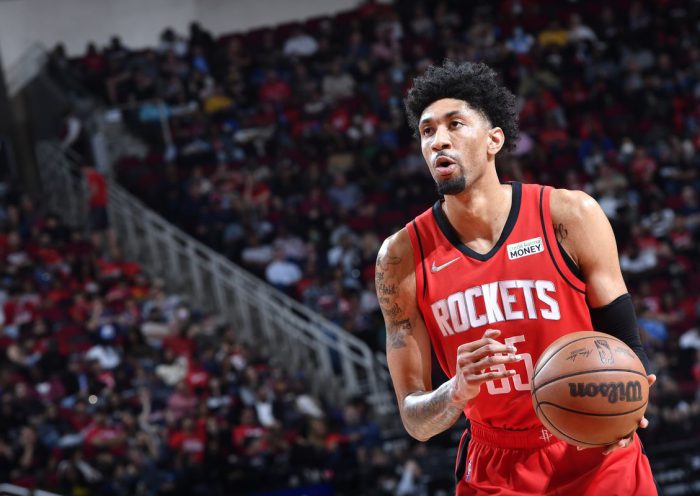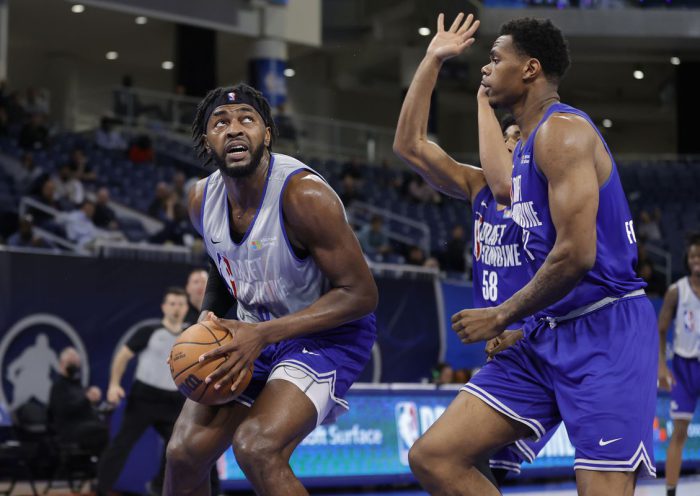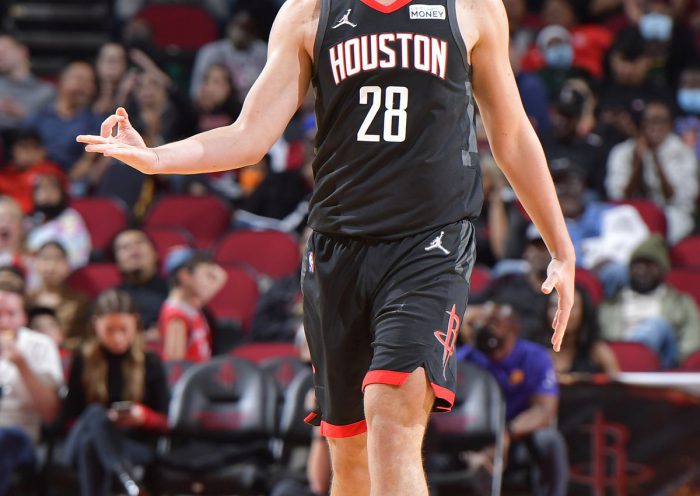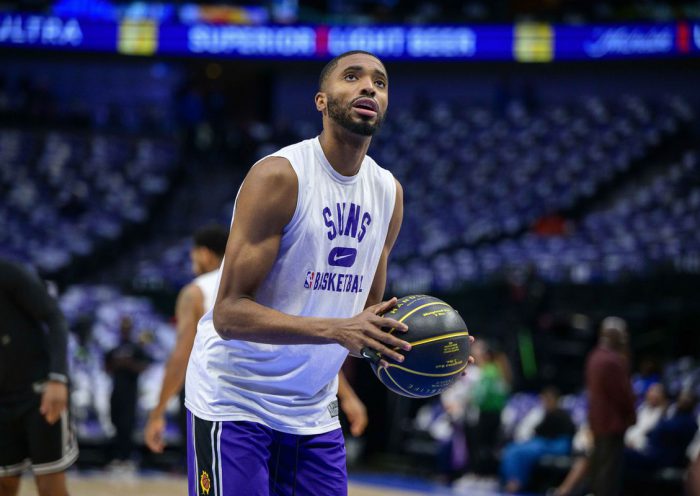cheap #10 Jalen Smith Youth 2021 NBA Finals BoundAssessing Scouting Accuracy For The Last 20 Years (Part IV)
Welcome back to the exploratory series on recruiting rankings gathered by RSCI!
If you missed the prior parts, fear nothing. Here is a quick recap of the introduction so you don’t feel lost.
What I’m aiming with this series is to get a better sense of how different scouting services have fared in terms of ranking the Top-100 prospect of each of the last 20 classes of hoopers around the nation coming out of high school. For that, I’m using a database based on data from the Recruiting Services Consensus Index (RSCI), which gathered information from multiple scouts and generated composite rankings of recruits for each year. On top of that, using information coming from Basketball-Reference.com, I have access to the Win Shares produced by each player that eventually reached the NBA.
Just armed with that information we can quickly see how rankings and production align, and even generate some metrics such as the simple “Prospect Value (PV)” metric I introduced in the first chapter. It just puts together the ranking of prospects and their production in order to find high-ranked busts or low-ranked diamonds. The higher the PV of a player, the more underrated he was back in the day by scouts.
With all that said, let’s keep surfing the RSCI recruiting data to answer more and more questions!
Which is the relation between years spe los suns shirtnt on college and NBA production?
In the third part of the series, I mostly explored the world of the one-and-dones. That left out of the equation the majority of players included in the data set, which are the ones that will feature in this answer.
While almost every one of the players to spend only one year in college are sure-things from the get-go, that can’t be said for those who are ranked lower on their recruiting classes and have to improve their stock at the collegiate ranks prior to declare for the NBA draft.
In a perfect world with a linear prospect progression and evolution, one could suppose that the more time a kid plays in the NCAA, the better his game will get and thus he’ll be more productive and fit better in the NBA once he makes it to the professional level. Let’s see if that checks. Here are the Win Shares peNBA Polo Shirtsr year for players that spent one, two, three, and four or more (due to injury, ineligibility issues, etc) years at an NCAA D-I college:
After all, it looks like production and experience are inversely correlated. It is something we could have expected, though, as we have already talked about how the h Phoenix Suns #33 Grant Hill White Throwback Stitched NBA Jerseyigher a prospect is ranked, the most probable is he takes advantage of his situation and therefore gets to the draft as soon as possible to make the most out of his chances. suns basketball jersey
That means that the guys who leave the NCAA early are those who are ranked higher and therefore (at least on average) the best players of their classes and those expected to produce more at the pro level. This is further proved by those guys who were allowed to skip college altogether back in the day, as they produced even more WS/Yr than the 1-yr NCAA players (2.75 to 2.44).
And what about the relation between years spent on college and the chance of surpassing expectations at the professional level?
Another way to look at the data is by the Prospect Value metric I defined earlier in the series. Given the ranking of a prospect coming out of high school and the Win Shares he produced over his NBA career, we can see who exceeded the expectations (a lot of WS while being lowly ranked) or who fell short of them (highly-ranked prospect not very productive as pros).
For this, we can plot the years spent in the NCAA ranks and the PV/Yr. These are the results:
Unsurprisingly, the chart is flipped. What this means is that on average, prospects that leave college early tend to be as productive as expected by their rankings coming out of high school, thus generating no surprise. Those that stay for longer in the NCAA are most often lowly ranked and therefore have lesser expectations once they turn pro, so if they overachieve even a little their PV gets higher.
the valley suns jerseyAs a rule of the thumb, highly ranked prospects are born with the ability to be stars from day one, and lowly ranked prospects work their asses during a bunch of years at the collegiate level to get to a point where they are more productive than their rank would have indicated. Nothing new here.
Since players get out of high school, what is the average time it takes for them to make it to the NBA?
We have already introduced the trendy one-and-done approach to college careers. It is the thing nowadays. Heralded or not, most kids try to spend as little time as possible in the NCAA, hoping to reach the NBA and see their first paycheck as sooner as they can. Given the prep-to-pros road is and will be blocked for a few more years, that’s the fastest way they can make it to the pros.
A quick look at the data shows how this has been the case more and more during the past years, with kids taking less time since finishing high school to getting a chance at the NBA ranks.
It’s said that a picture can speak more than a thousand words. Well, here’s proof of it. Just a quick look at the chart shows where the trend is going. Kids graduating high school nowadays are trying to make it to the NBA in just a year, spending the least possible amount of time in the NCAA as they can, as if they were committing a crime by staying there.
It took some time for the one-and-dones to become the prominent force, and on average even the Top-100 prospects of the nation spent around three years in the D-I before NBA teams gave them a chance, but that has changed as of late with kids going from prep to pros in no more than two years.
We all know about some famous one-and-dones, as they usually are the top NBA draft picks each year. Which are some players that took long to make it to the NBA?
At the end of the day, a Top-100 prospect ranking includes mostly the best players around the nation. Consider that each year hundreds, thousands of kids graduate from high school, so to be deemed one of the 100-best players in the USA is quite an achievement. That doesn’t mean, though, that we must expect each and every one of those players to be instant successes at the collegiate or professional levels. That would be totally unreasonable.
Although the best of the best see themselves playing next to their NBA heroes in as little time as possible, most of the players inDevin Booker Jerseyscluded in the RSCI’s data set aren’t that lucky. From 1998 to 2017 (those being the high school graduation years), 2001 players have made it to the RSCI rankings. Only 672 (34 percent) of them eventually played an NBA game. That number may get a little bigger in time, though.
Let’s have a look at the average number of years it took all of those Top-100 prospects to finally see the ball in an NBA court:
The data can’t make more sense. There were 33 kids that made it straight from high school. Leaving those apart, the bulk of players to be claimed at some point by an NBA franchise received the call LaMarcus Aldridge Jerseysone to four years after leaving high school. Expected, as that is the time frame which most players spend playing in the NCAA ranks. Some spend an extra seasons there due to different reasons, and that shows in the 5-Yrs players’ bar. From that point on, though, things aren’t that bright.
If a player finishes his NCAA career or plays basketball for six or more years without having received news from the NBA, he may very well start forgetting about ever making it to the biggest of stages. Leaving the prep-to-pro prospect out of the equation, the chances for that supposed late-bloomer to break through are 31-in-585, which is toNBA Baby Clothing say a paltry five percent.
This doesn’t mean there have not been successful stories out there during the years, although those are the least. Here are some of the most interesting ones:
2006 No. 76 Patrick Beverley: It took Beverley six years to debut in the NBA since graduating from high school in 2006. Patrick was selected by the Los Angeles Lakers in the 2009 draft, though, as a second rounder. Given the problems and ineligibility issues he suffered at Arkansas, he turned pro in 2008 and played basketball for a year in Ukraine for Dnipro. Once drafted by the Lakers, he was traded to the Heat but come August of 2009 he was already enrolled in another European team as he didn’t make Miami’s roster. After another season across the pond, he came back to Miami and then back to Europe for the 2011-12 campaign to play for Spartak St. Petersburg in Russia. It wasn’t until 2013 when Houston gambled on him, put him on its G League team and later made his debut in an official NBA game against the LA Clippers. Beverley hasn’t looked back since, spending five seasons in Houston and two in Los Angeles.1999 No. 79 Jamario Moon: You can’t count the number of teams Jamario has played for since he turned pro in 2001 even using all of the fingers in both your hands and feet. After playing one year of college basketball at Meridian Community College, he found his role as a bouncing player between multiple development teams, enrolled in the Harlem Globetrotters, tried luck in Mexico, and finally saw his first NBA minutes in 2007 when the Raptors came calling. That is, he had to wait eight years to go from prep school to the NBA. After all was said and done, he left the league in 2012 with 286 games in his belt.2007 No. 89 Brad Wanamaker: The oddest of the stories and the longest of shots in the whole RSCI data set. Wanamaker barely cracked the Top-100 of his class in 2007 slotting at No. 89. The Uni chris paul black suns jerseyversity of Pittsburgh was able to get him as the 6th-best player out of Pennsylvania. He spent four years playing for the Panthers at the collegiate level and was even named an honorable All-AmericanRussell Westbrook Jerseys by the A white suns jerseyP as a senior. He went undrafted in 2011 and moved to Italy, then France, Germany, and Turkey where he played for Fenerbahce and made the Final Four’s final game where he lost to Real Madrid in 2018. In July of that same year he signed with Boston and this past October he was able to see himself dressed in green for his first official NBA game. His ultimate achievement: making it to the NBA playoffs in 2019 with the Celtics playing four games and averaging 4.3 minutes and 2.5 points per game. If you have not counted, those are 11 years since he finished high school to finally cracking the NBA, just in case.



